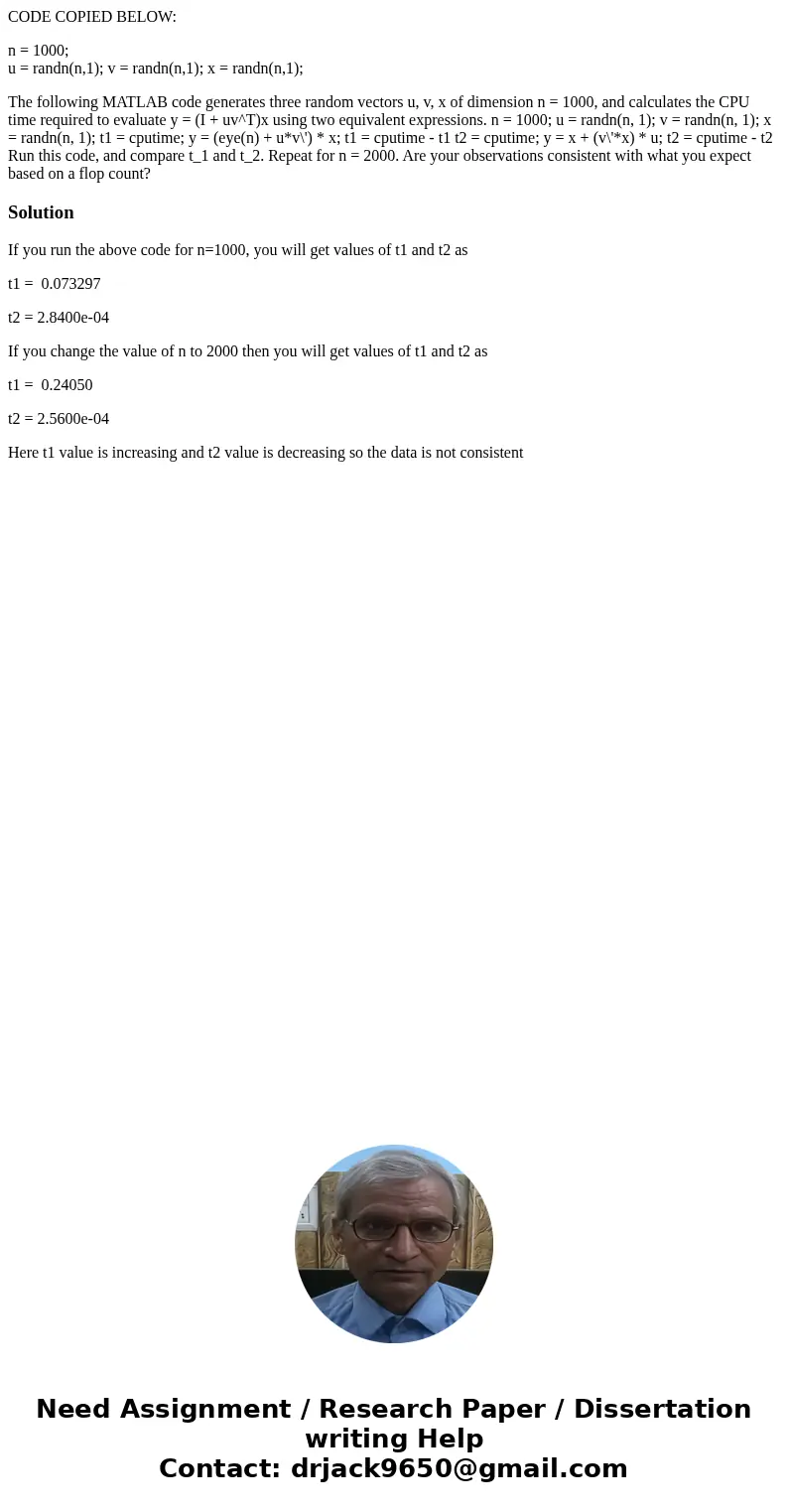CODE COPIED BELOW n 1000 u randnn1 v randnn1 x randnn1 T
CODE COPIED BELOW:
n = 1000;
u = randn(n,1); v = randn(n,1); x = randn(n,1);
Solution
If you run the above code for n=1000, you will get values of t1 and t2 as
t1 = 0.073297
t2 = 2.8400e-04
If you change the value of n to 2000 then you will get values of t1 and t2 as
t1 = 0.24050
t2 = 2.5600e-04
Here t1 value is increasing and t2 value is decreasing so the data is not consistent

 Homework Sourse
Homework Sourse